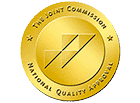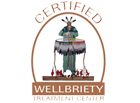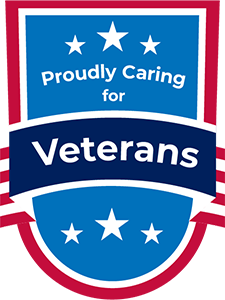The opioid crisis continues to ravage communities across the United States and around the world, causing widespread devastation for individuals, families, and society at large. With opioid overdose deaths increasing each year, it has become more crucial than ever to focus on opioid overdose prevention as a means to protect lives and address this ongoing public health emergency.
In this blog, we will explore the key factors involved in opioid overdose prevention, including education, harm reduction strategies, and available interventions that can save lives.
What Is an Opioid Overdose?
An opioid overdose occurs when an individual consumes more opioids than their body can safely handle, leading to life-threatening symptoms. Opioids include prescription painkillers like morphine, oxycodone, hydrocodone, and fentanyl, as well as illicit substances like heroin.
During an overdose, opioids slow down or even stop critical bodily functions like breathing. This can result in respiratory depression, which, if not addressed immediately, can lead to death. Fentanyl, a potent synthetic opioid, has exacerbated the crisis due to its high potency and the increasing prevalence of illicit fentanyl-laced drugs.
Signs of Opioid Overdose
The effects of opioid overdose can be severe and even life-threatening. In general, the signs of an opioid overdose will start with confusion, fatigue, and labored breathing. After, people often pass out or lay down and become unresponsive to any attempts to wake them. If you or someone you are with is experiencing any of the symptoms after taking opioids, seek medical help immediately as it may be an opioid overdose.
Common signs of opioid overdose can include:
- Drowsiness
- Confusion
- Agitation
- Paranoia
- Pain
- Poor coordination
- Small pupils
- Shallow breathing
- Loss of consciousness
- Unresponsiveness
- Slow breathing
- Slow heart rate
- Respiratory failure
- Nausea, vomiting, and diarrhea
- Clammy blue skin (poor circulation)
- Snoring or gurgling (AKA "death rattle")
If you see any of these signs in yourself or someone else, seek medical attention immediately. It is important to remember that an opioid overdose can be fatal if not treated right away.
What Can I Do to Prevent an Opioid Overdose?
If you are with someone who has overdosed on opioids, call your local Emergency Medical Services (EMS) as soon as possible. Be prepared to give the address, name of the person overdosing, and any other information they may need. You can also call 911 if necessary.
It is important to seek medical attention right away if opioid overdose is suspected so that appropriate treatment can be provided. Treatment options may include administering the opioid antagonist called naloxone (Narcan).
Preventing an Overdose With Narcan
Narcan, or naloxone, is a life-saving medicine that can reverse the effects of an opioid overdose and restore breathing when administered in time. Naloxone (commonly known by the brand name Narcan) is a medication that can reverse an opioid overdose within minutes. It works by binding to opioid receptors in the brain and reversing the effects of opioid toxicity, such as respiratory depression. It is available as an auto-injector, nasal spray, and intranasal solution. The medication is an opioid antagonist, meaning it counteracts the side effects of opioids and can halt an overdose in its tracks. For this reason, Narcan has saved many individuals’ lives who would have otherwise died from an overdose.
For more resources on what Narcan is, what it does, how to use it, and where to get it, click any of the following links:
Narcan Is Now Accessible as an Over-The-Counter Treatment for Opioid Overdose
In 2023, the FDA approved naloxone nasal spray as an over-the-counter treatment. Previously, the life-saving medication was only available with a prescription, making it difficult to access and resulting in thousands of lives lost to overdose.
Now that NARCAN and naloxone are available to the public, we suggest purchasing the medication and having it on hand to help someone in an emergency. Whether you or your loved one is in recovery from opioid addiction or not, having medication can save a person’s life if they begin showing signs of opioid overdose.
While Narcan can reverse the effects of an opioid overdose, it is not a stand-alone solution to addressing opioid addiction. Addressing an opioid addiction requires long-term opioid addiction treatment and support. It is also important to remember that a person who has overdosed should not be treated with judgment or stigma. Stigma can lead to barriers to seeking help and further overdoses.
Professional Opioid Addiction Treatment
Opioid abuse recovery involves a spectrum of care that ranges from outpatient treatment to residential, 24/7 care. The right level of care depends on the severity of the opioid use disorder (OUD), individual needs, and any co-occurring mental health or physical conditions.
Here’s a breakdown of the various levels of care available at Royal Life Centers for those seeking recovery from opioid addiction:
Medical Detox for Opioid Abuse
While Narcan can reverse the effects of an opioid overdose, it is not a stand-alone solution to addressing opioid addiction. Addressing an opioid addiction requires long-term opioid addiction treatment and support. It is also important to remember that a person who has overdosed should not be treated with judgment or stigma. Stigma can lead to barriers to seeking help and further overdoses.
Inpatient Opioid Abuse Treatment
Inpatient treatment for opioid addiction is an intensive residential care program designed to provide individuals with the highest level of support and supervision during their recovery journey. It is typically recommended for people who have severe opioid addiction, a history of relapse, or co-occurring mental health disorders. Inpatient treatment allows individuals to focus entirely on their recovery, free from the distractions and triggers of their everyday environment.
Outpatient Opioid Abuse Treatment
Outpatient opioid addiction treatment provides individuals with a flexible and less intensive option for managing and overcoming opioid addiction. Unlike inpatient treatment, where individuals reside at a treatment facility, outpatient care allows individuals to live at home and attend treatment sessions at scheduled times. This approach is ideal for people who have a stable home environment, a strong support system, and a commitment to recovery but still require professional guidance and structure to overcome their addiction.
Aftercare for Opioid Abuse Treatment
Opioid addiction recovery doesn’t end once an individual completes a treatment program—it’s a continuous journey that requires sustained support and care to help prevent relapse and maintain long-term sobriety. Aftercare plays a crucial role in providing ongoing support and resources after formal treatment ends, ensuring that individuals have the tools and assistance needed to thrive in their recovery.
Sober living homes are residential environments that provide a drug- and alcohol-free space for individuals to live as they transition back into society. These homes offer structure and accountability, helping individuals avoid high-risk situations and remain focused on their recovery. Residents are typically required to attend support group meetings, participate in random drug testing, and adhere to house rules.
Opioid Addiction Treatment Near Me
The road to recovery from opioid abuse is a long and challenging one, but the right level of care can make a significant difference in helping individuals regain control of their lives. Whether through outpatient services, intensive residential treatment, or ongoing support, opioid use disorder is treatable, and with the proper care, individuals can overcome addiction and build a fulfilling, sober life. Our treatment centers in Arizona and Washington State are ready to help you! Reach out today, and let’s get started!





